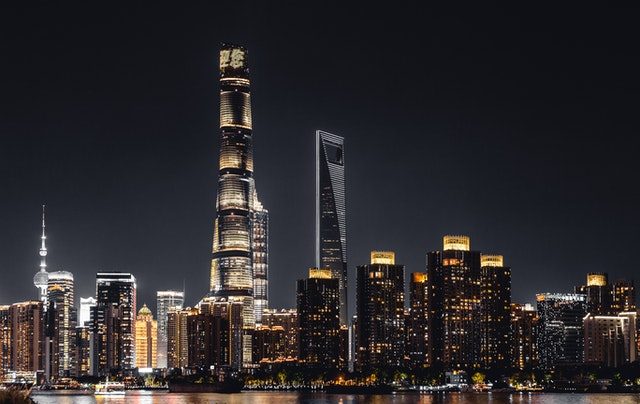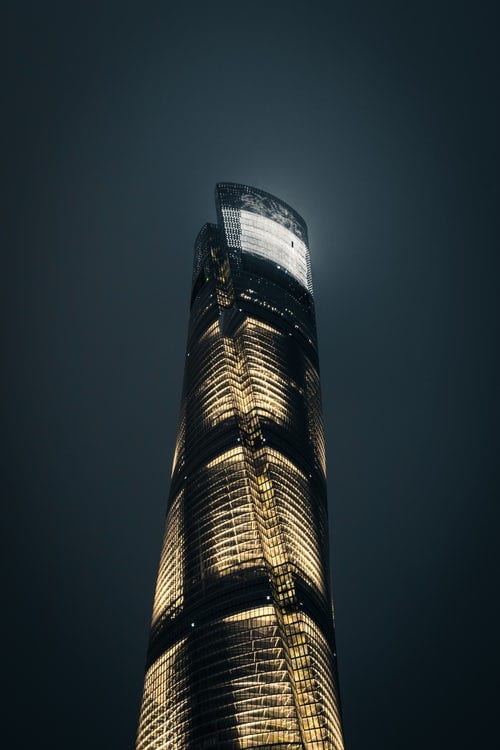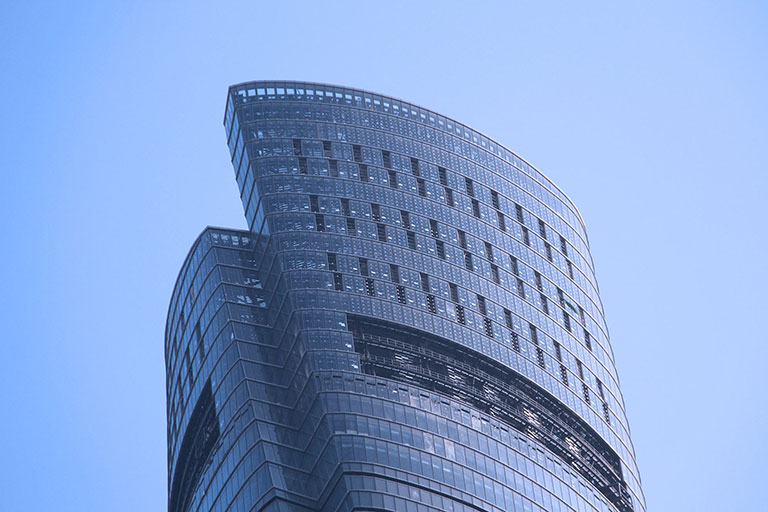
“Sustainable buildings are: lovable, because if they can’t be loved, they will not last; durable, because they must endure, if they’re to be sustainable; flexible, because if they endure, they will need to be used for many uses over centuries; frugal, because energy hogs can’t be sustained in a healthy way long into an uncertain future.”
-John Gordon.
The objective of a green building is to increase the efficiency of resources creating a positive social, economic, and environmental impact. We have been bringing in this series on pathbreaking sustainable buildings that are setting new standards in minimizing the carbon footprints of the buildings and making the built environment more eco-friendly. So, here’s another structure that aims to leave behind a better world for our future generations!
 Reaching new heights: Shanghai Tower, a contemporary marvel
Reaching new heights: Shanghai Tower, a contemporary marvel
Shanghai Tower stands as a beacon of architectural ingenuity and sustainability, dominating the skyline of China’s bustling metropolis. Rising 632m above the ground, this iconic skyscraper boasts an array of innovative features that redefine the boundaries of modern architecture. Beyond its striking silhouette, Shanghai Tower is a testament to sustainable design, incorporating green features and strategies to minimize its environmental footprint.
Architectural design:
Designed by the renowned architectural firm Gensler, Shanghai Tower is a triumph of contemporary design. Its sleek, spiraling form symbolizes the dynamic growth of Shanghai, while also serving functional purposes. The tower’s tapering profile reduces wind loads, enhancing structural stability and efficiency. Divided into nine (9) distinct zones, each with its own unique function, Shanghai Tower seamlessly integrates diverse spaces within its vertical framework.
Height and dimensions:
With a total built up area of over 576000 sqm, Shanghai tower stands as one of the tallest buildings in the world. Its 128 floors house a variety of facilities including offices, hotels, retail outlets, and observation decks. The tower’s innovative design maximizes usable space while minimizing its environmental impact.
Green features and strategies:
At the heart of Shanghai Tower’s design philosophy is a commitment to sustainability. The tower employs a range of green features and strategies to reduce energy consumption, conserve resources, and mitigate environmental impact.
- Energy-efficient façade

The tower’s façade is clad in a high-performance glass curtain wall that maximizes natural light penetration while minimizing heat gain. This reduces the need for artificial lighting and cooling, thus lowering energy consumption and operational costs.
- Wind turbines
Strategically integrated into the tower’s design, vertical-axis wind turbines harness wind energy to generate electricity. These turbines capitalize on Shanghai’s breezy climate, supplementing the tower’s power supply with clean, renewable energy.
- Rainwater harvesting
Shanghai Tower incorporates a sophisticated rainwater harvesting system that collects and stores rainwater for non-potable uses such as irrigation and toilet flushing. By reducing reliance on municipal water sources, this system conserves precious resources and reduces strain on local infrastructure.
- Green roofs and sky gardens
Several floors of Shanghai Tower feature green roofs and sky gardens, which serve multiple purposes. Thes lush green spaces enhance the tower’s aesthetic appeal, and in addition, provide insulation, absorb carbon dioxide, and promote biodiversity.
Environmental impact of green measures:
Shanghai Tower’s commitment to sustainability extends beyond its design and construction phases to its operational lifespan. By prioritizing energy efficiency and resource conservation, the tower significantly reduces its carbon footprint and environmental impact.

- Energy savings
The tower’s energy-efficient design and green technologies result in substantial energy savings compared to conventional buildings of similar scale. Reduced electricity consumption translates to lower greenhouse gas emissions and a smaller ecological footprint.
- Carbon footprint reduction
Shanghai Towers’ emphasis on renewable energy sources and eco-friendly practices contributes to a significant reduction in carbon emissions over its lifetime. By setting a precedent for sustainable development, the tower inspires other cities and developers to embrace environmentally responsible design principles.
Shanghai Tower stands as a towering testament to the marriage of architectural innovation and sustainable design. From its striking silhouette to its eco-friendly features, the tower embodies the spirit of progress and environmental stewardship. We will keep sharing some landmark green buildings that help humanity tackle the challenges of urbanization and climate change.
References:
https://smart-cre.com › Blog
https://www.tomorrow.city › shanghai-tower-sustainable-…
https://journeys.dartmouth.edu › the-shanghai-tower
https://www.theguardian.com › cities › aug › inside-sha…
https://constructsteel.org › Projects › Commercial
 About the Author
About the Author
Sandeep Singh is an architect from IIT Roorkee. Ten years after graduating, he lost his vision to genetic Diabetes. He reinvented his career and turned writer. He has authored two fiction books and writes blogs on Architecture, Outsourcing, Safety and a variety of other subjects for different organizations. He also chairs and runs two NGOs.
